By Dr. Lara Lempertienė
The topic of Jewish documentary materials preserved in the libraries and archives of Lithuania is complex. These holdings were not formed in any purposeful or planned way, but rather were simply stored after sur- viving the Nazi occupation as well as later Soviet purges. The materi- als ended up in not one but several holding institutions in Lithuania. For decades these institutions acted as if there were no connections between the parts of their holdings, and they generally were unaware of other survived portions of the materials in repositories abroad. Nevertheless, despite lacking proper conservation, cataloguing and study, these printed and man- uscript Jewish documents managed to survive, not by any miracle, but through the efforts of some very special people.
In prewar Vilnius there were 4 public Jewish libraries (2 of them children’s libraries), the Yiddish Scientific Institute (YIVO) with its first-rate academic library in several languages, voluminous archives and several periodical publications, and the Historical-Ethnographic Society with its archive of rare Jewish books. Each Jewish school, synagogue and social organization had its own library, and there were many privately owned prominent book collections. Several Jewish daily newspapers and other periodicals as well as the output of productive publishing houses added to the plethora of Jewish documentary materials. Each of the mentioned institutions preserved its extensive internal documentation and correspondence, and of course there was an enormous amount of documents generated by hundreds if not thousands of individual Jews, very few of whom survived.The topic of Jewish documentary materials preserved in the libraries and archives of Lithuania is complex. These holdings were not formed in any purposeful or planned way, but rather were simply stored after sur- viving the Nazi occupation as well as later Soviet purges. The materials ended up in not one but several holding institutions in Lithuania. For decades these institutions acted as if there were no connections between the parts of their holdings, and they generally were unaware of other survived portions of the materials in repositories abroad. Nevertheless, despite lacking proper conservation, cataloguing and study, these printed and manuscript Jewish documents managed to survive, not by any miracle, but through the efforts of some very special people.
The first dramatic changes to the status of these collections and their owners were made in June of 1940 by the Soviet regime that came to Vilnius as a result of the Molotov-Ribbentrop pact of 1939. Most Jewish organizations were closed or rendered inactive, and many members of their staffs were arrested, killed or exiled. The Jewish community was dismantled, its belongings confiscated, and its cultural institutions nationalized or closed. With the subsequent Nazi invasion in June of 1941 the Jewish cultural treasures that had still remained in place under the Soviets (primarily because there had been no time for transfer- ring or dispersing them) underwent a well planned and thorough plun- dering and part annihilation. In that process the Nazis cynically involved Jewish intellectuals – inmates of the Vilna ghetto. However, many Jewish documents and materials were hidden and rescued by these same people despite being instructed to turn the materials over to the Nazis for shipping to Germany or to otherwise destine them to perish. This story was recently researched and told in amazing detail by Prof. David Fishman in his award-win- ning monograph “Book Smugglers: Poets, Partisans, and the Race to Save Jewish Treasures from Nazis” (New York, 2017; Lithuanian trans- lation – Vilnius, 2019).
Although most of the Vilnius ghetto prisoners were murdered, some survived as members of the anti-Nazi Soviet partisan resistance that they had managed to join before the liquidation of the ghetto. Many of those fighters were the same people who previously showed initiative and courage in hiding Jewish books and documents. Later, in 1944, while participating in the liberation of Vilnius, they were able to recover some of the materials they had previously hidden. They witnessed a scene of chaos and scattered archives abandoned by the Nazis, as well as bundles of books and documents that had been prepared for destruction at the paper mills. They were allowed to establish the Jewish Museum of Vilnius, where they housed all of their found and gathered materials. However, soon thereafter, it became clear that Jewish national life under the Soviets would not be allowed to flourish, or, indeed, exist at all. In 1949 the Jewish Museum was closed and its exhibits dis- persed among different cultural institutions of Soviet Lithuania.
An institution called the State Book Chamber, founded in Vilnius in 1945, the Head of which from 1946 onward was Antanas Ulpis, received most of the books that had been collected by the Jewish museum, as well as many sorted and unsorted Jewish documents. But even previous to this transfer, Ulpis and other dedicated members of his staff were so concerned about the fate of abandoned books, Jewish and non-Jewish alike, that they organized recovery activities in Vilnius, as well as numerous expeditions into the smaller Lithuanian towns and countryside, with the goal of rescuing what material they could. The largest group of recov- ered materials was from the Jewish population of provincial towns and rural areas, which had been almost completely annihilated. On Ulpis’s instructions, the Book Chamber also acquired printed materials from antiquarians and private owners. Among those acquisitions there was much Judaica. As a result of all these efforts, after the closing of the Jewish Museum in 1949, more than 50,000 books, hundreds of complete or fragmented sets of periodicals, and close to 200 boxes of documents were collected and stored at the Book Chamber.
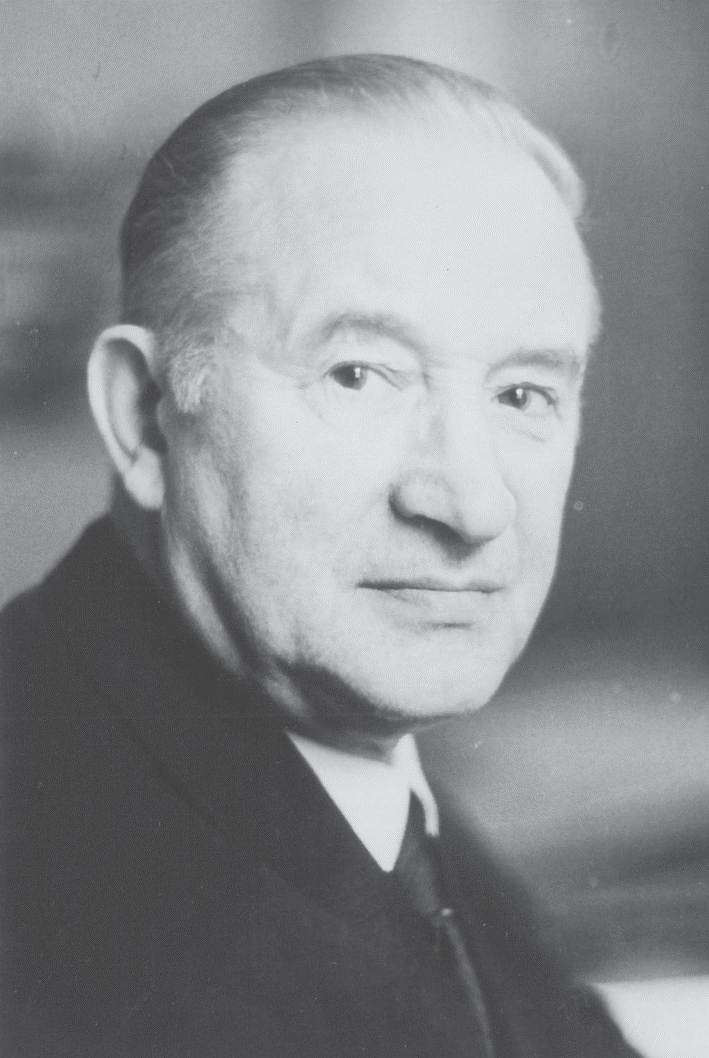
Ulpis and colleagues tried to save Jewish materials not only from initial loss, but also from subsequent destruction by the Soviets, who were implementing unofficial but very obvious anti-Semitic policies. Observing how the Sovi- ets were closing the last remaining Jewish institutions, destroying Jewish cemeteries and implementing covert or open discrimination against the Jewish population, Ulpis and his associates understood that Jewish books and documents were at risk for being sent, once again, to paper mills for destruction. So, on Ulpis’s orders, the employees of the Book Chamber, that was located in a huge, labyrinthine building of the former St. George Church, concealed thousands of books and periodicals written in Hebrew or Yiddish under piles of Soviet newspapers. As one former staff mem- ber of the Book Chamber, then a young girl, recalls: “After he showed me all those things, he (Ulpis) pointed out the hidden manuscripts of the Jewish archive, saying, ‘this is something you need to forget and never mention to anyone.’ ”
The Judaica stored at the Book Chamber was a hidden treasure but of dubious status: although saved, it was impossible to process even that material that had been transferred officially from the Jewish Museum as restrictions against promotion of any sort of national life or culture gradually became more pronounced. There could be no mention of transfer of any of this material to other countries; in fact, the interna- tional community was unaware of these Jewish document treasures for several decades. Ulpis did instruct Jewish staff members of the Book Chamber to work discreetly on the stored Jewish materials. The testi- mony of one such worker can be found in David Fishman’s book “Embers Plucked from Fire.” This person recounts how he allocated a certain amount of time during his workday to organize Jewish books and documents. This work was so carefully done that the non-Jewish employees of the Book Chamber were almost unaware of it. As one of them remembered decades later, “as for the Jewish collection, I know little of it, but ever since my first days here I heard from Ulpis that he had saved it.” At the same time, even personnel at the Book Cham- ber who were not involved with the Jewish collections were aware of the risks taken by Ulpis; from the same interview: “I should say that this was a dangerous job at the time…Ulpis often complained that nobody understood him and that he was risking much. But he was a strong person. He had loved books since his childhood regardless of the language they were written in or their contents, just like he didn’t care about the political opinions of the people employed at his institution… He was convinced that…a book…in whatever script be it written, was a precious treasure of Lithuania and all mankind. He was able to argue this position without fear of losing his good name or anything else.”
It should be mentioned that Antanas Ulpis was a member of Lithuanian Communist Party (and indeed, no head of an institution that dealt with “ideologically sensitive” matters like books and news- papers could be unaffiliated with the party under that totalitarian regime). On one hand, his membership in the Party could be a blessing for his work, because Party members attracted less suspicion. Moreover, he was a war fighter, a former member of the renowned 16th Lithuanian Regiment (in which many Lithua- nian Jews fought and with whom he most probably came in touch). But on the other hand, a Party member who would draw upon himself the discontent of the authorities would risk disgrace, loss of job and probably prosecution, and their family would be implicated as well. Under such conditions, Ulpis’s conduct was an act of a selfless and extremely brave person.
In the 1950s, some cultural workers from the Lithuanian countryside transferred abandoned Jewish materials from their towns to the insider knowledge that the Book Chamber had such holdings, was the lack of specialists in Jewish languages in the provinces, and partly – an unwillingness to hold collections of documents that might be seen as potentially dangerous. For instance, in 1951 alone, more than 2,000 Jewish books and bound manuscripts were transferred without any formal inventory to the Book Chamber by the Telšiai City Museum. Ulpis did not hesitate to accept such donations, although few of these trans- fers were documented, at least not in detail – in other words, these transactions were only half-open.
Fortunately, Ulpis had the support and trust of his employees, who admired him and would never inform on him to the authorities. Former staff members recall a climate of mutual respect and warmth that the Head of the Book Chamber created: “I joined a large team, a multinational team, because people of different nationalities worked here: Lithuanians, Jews, Russians, Belorusians… Ulpis’s phenomenal person- ality managed to cement together a team that felt like a family, regardless of differences in nationality, intel- lect, or erudition.” Therefore, even the people on the team who did not personally participate in the rescue or processing of the Jewish mate- rials shared the work ethic of the institution. It was truly legendary.
 Some of Jewish manuscripts recently rediscovered in the National Library of Lithuania. (Judaica collection, National Library of Lithuania)
Some of Jewish manuscripts recently rediscovered in the National Library of Lithuania. (Judaica collection, National Library of Lithuania)
When I myself joined the National Library in 1995, Ulpis’s coworkers whom I met still preserved the spirit of the Book Chamber and were full of fond memories of Ulpis, whom they called their role model. Antanas Ulpis was a true champion of cultural heritage. As his son, Dainius, recalls from the atmosphere in their home at the time, his father’s stance “taught us to be respectful of the printed word and cultural artefacts.”
The Zeitgeist of Ulpis’s day did not allow for overambitious projects. In 1953 Ulpis finished a project that had taken many years to complete: “A Catalogue of Books of the Lithuanian Soviet Republic,” in which he included not only Soviet-time editions, but many items of Judaica as well. As Ulpis was not a bibliographer by training, this was an impressive achievement. However, his manuscript was heavily censored, and all information pertaining to Jewish print content was excised. A catalogue of the print Judaica holdings of the Lithuanian National Library would not appear until the year 2011. At the end of the 1980s, a small group of people with knowledge of Hebrew and Yiddish was officially invited by a new director of the Book Chamber, Vladas Lukošiunas, to help organize and process books and periodicals contained in the Jewish collection. The work was lead by Esther Bramson. By then, many gathered manuscript documents had been forgotten in their hiding places, only to be rediscovered in 1994. It was then decided to divide the material between three institutions: the manuscript division of the Lithuanian National Library that at the end of the 1980s had absorbed the Book Chamber, the Lithuanian State Archives, and the manuscript division of the Library of the Academy of Science. The printed matter and the documents, although closely connected in the past, now where housed in different institutions or different divisions of the same institution on the common provenance of the documents and the nonadvis- ability of separating them in such a mechanical manner. Nevertheless, due to Ulpis’ previous heroic efforts this very important group of documents had survived.
In the late Soviet period and after disintegration of the Soviet Union, Western scholars began getting access to the Judaica holdings of the National Library, and they drew the attention of the international community to this precious archive and motivated discussions relating to its status. The books and periodicals were gradually made more accessible through several projects. At the end of the 1990s, in cooperation with the U.S. Library of Congress, all periodicals printed in Lithuania were microfilmed and posted to the online digital database of the Lithuanian National Library. In 2002 the Lithuanian National Library, in collaboration with the Heichal Shlomo Museum in Jerusalem, donated more than 300 Torah scrolls from its holdings to the world Jewish communities. In the process of preparation for this project some damaged scrolls were located. In accord with Jewish custom, the latter were buried at the Jewish cemetery of Vilnius by an international group of rabbis, the first such ceremony in the postwar Lithuania.
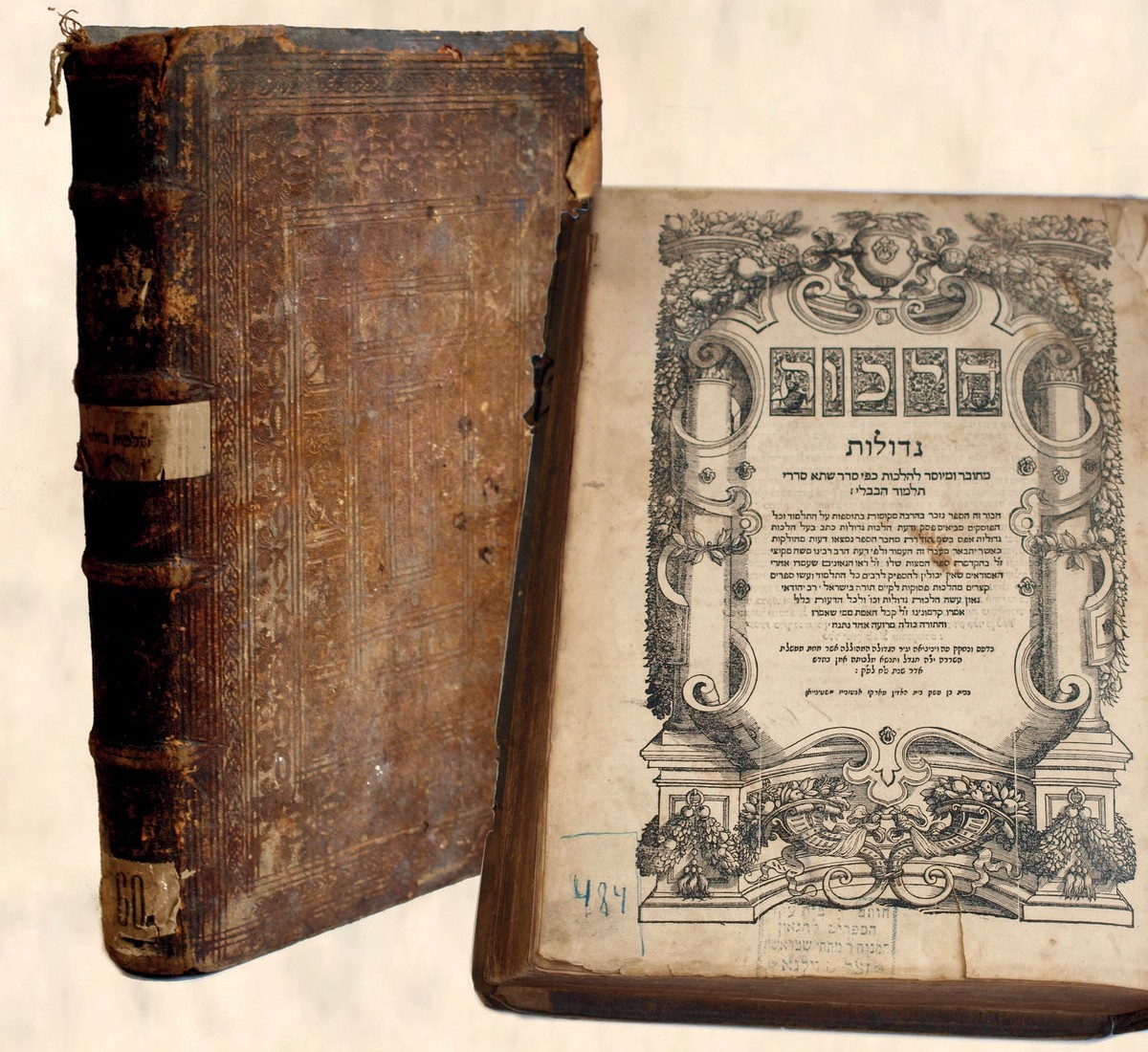 One of the oldest saved Jewish books: Halakhot gedolot (hebr. Great Laws) by R. Simon Kajara, Venice, 1548. (Judaica collection, National Library of Lithuania)
One of the oldest saved Jewish books: Halakhot gedolot (hebr. Great Laws) by R. Simon Kajara, Venice, 1548. (Judaica collection, National Library of Lithuania)
Due to the constant attention of the international community of academics and heritage institutions, the Lithuanian National Library came to value its Judaica holdings more and decided that working on them was one of its priorities. Three collections from the Judaica holdings were proposed by the Lithuanian National Library for inclusion in the National Register through its work, in close cooperation with other divisions of the National Library, the common provenance of the Jewish printed materials and manuscripts was confirmed. Under its supervision the documents were transferred from the manuscript division, and a united group of Judaica holdings was finally assembled. Although some documents still remained housed at the Central State archives and at the Library of the Academy of Sciences, they are being digitally reunited with the collection at the National Library virtually, in cyber- space, by the Edward Blank YIVO Vilna Online Collections Project.
The YIVO Institute was the first institution abroad to fully recognize the importance of Antanas Ulpis in securing survival of thousands of artefacts of Jewish documentary heritage and in this manner, preserving the memory of Lithuanian Jewish culture.
Despite the fact that his actions to save Jewish culture took place after the WWII, Antanas Ulpis was a true Righteous among the Nations, who inspired many other people to acknowledge the importance of Jewish documents. The Judaica librarians and archivists in Lithuania today respectfully try to follow in his footsteps.
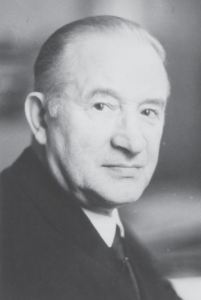
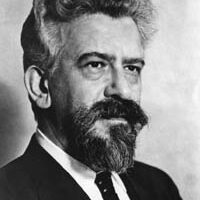
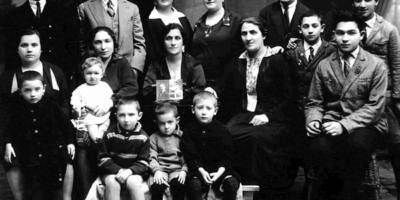
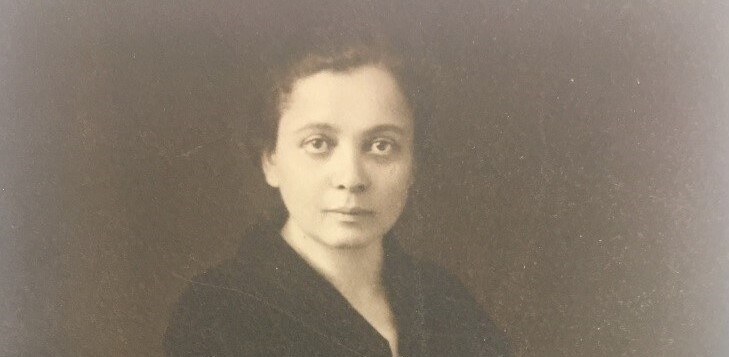
Parašykite komentarą